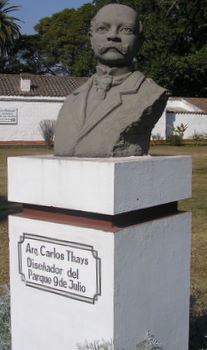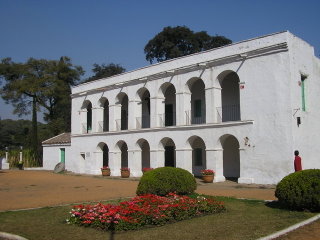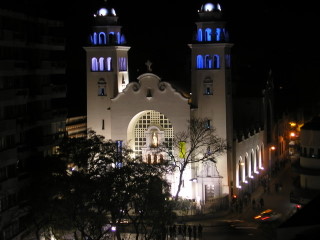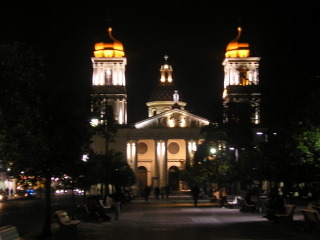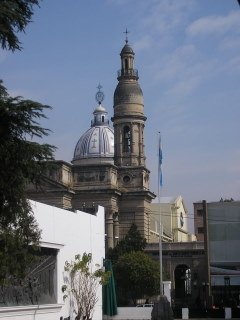|
TucumanBirthplace of Argentine Independence26°S. Lat. / 65 W. Long. Pop: 525,000 elev: 1,379 feet"... the Garden of South America, as Tucuman has been called,... It is only by visiting the upper provinces that one can acquire a complete notion of the vast and manifold resources of these magnificent regions; of their undeveloped riches in mines and timber and products of all kinds, which so far lay dormant, and are waiting, as it were, for the magic touch of capital to turn them into tangible wealth." Sir Horace Rumbold The Great Silver River: Notes of a Residence in Buenos Ayres in 1880 and 1881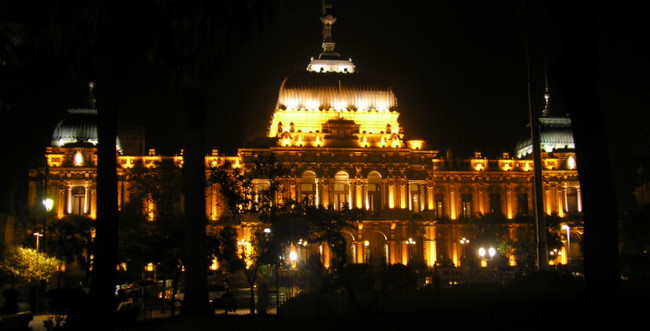
(Casa de Gobierno)
In many ways the Andean northwest is still waiting for that magic touch since the northwest has one of the lowest per-capita incomes in Argentina. Yet Sir Horace’s Garden of South America rings true as the 7-½ hour bus ride from Tilcara via Salta enters the outskirts of Tucuman. Acre upon acre of citrus groves and sugar cane spread a lush green accent on the otherwise brown Andean landscape. Flowers spill from window boxes on the fading colonial buildings. One of the great French horticulturalist Charles Thays’ largest parks outside of Buenos Aires, Parque 9 de Julio, dominates one entire side of the city. Large mature trees fill Plaza Independencia and line the streets providing much needed shade in a city that can be stiflingly hot and humid in the summer.
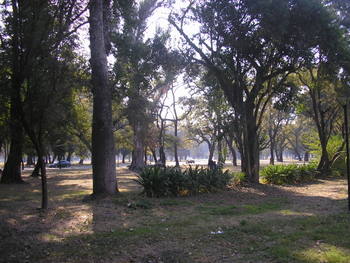
(Charles Thays and Parque 9 de Julio)
(Bishop José Colombres planted the first sugar canes at his country home,1821, now a historic sight within Parque 9 de Julio)
Argentina’s fourth largest city, founded in 1565, Tucuman had its first flush of glory in 1816 when the Congress of Tucuman declared Argentine independence from Spain. The Museo de la Casa Historica de la Independencia Nacional, Congresso 151, is a 1940 reconstruction of the 18th century mansion of Don Francisca de Laguna who hosted the assembly. The museum houses many important national documents, art and furnishings from the colonial period and is a fine example of an 18th century villa -admission AR$5 (US$1.35).
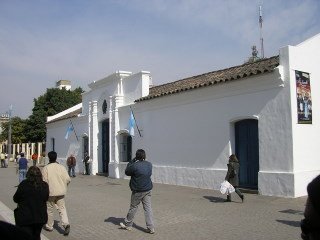
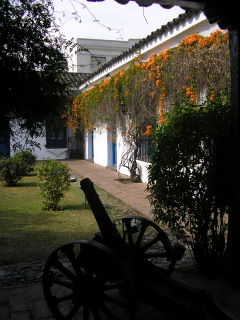
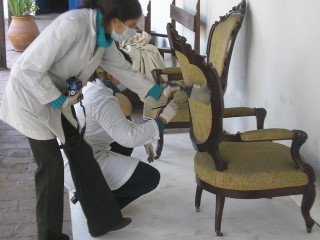
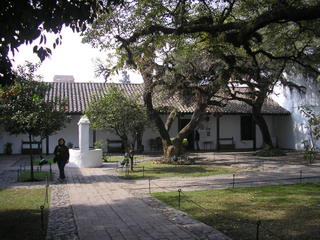
(museum conservators cleaning 18th century chair)
On Plaza Independencia stand two large churches with a third only a block away. The Cathedral is topped by blue-and-white tiled domes wonderfully lit at night. Near the Cathedral is the imposing Casa de Gobierno stunningly lit in the evening like a neo-classical palace. On the north side of the Plaza are three townhouses of which one is Casa Padilla, the former neo-Italianate mansion of a prominent Tucuman family. Now a cultural center, the house has lovely tile work, stained glass, sculptures and interior gardens - free admission. Down one block from the Plaza, at Avenida 24 de Septembre 565 is the Museo Folklorico. Once the townhouse of the Obispo Colombres family, the Museo contains an eclectic collection of antique musical instruments, lace, mate and other kitchen ware as well as tools - free admission.
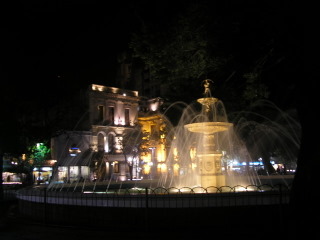
(Iglesia La Merced)
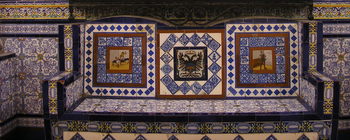
(Cathedral and tile work at Casa Padilla)
Tucuman is a business oriented city being the Northwest’s commercial hub, and its hotels are geared to the business traveler. The Hotel Mediterraneo, Calle 24 de Septembre 364, just around the corner from the Plaza, was as good as any to spend a couple of nights. I observed nothing special in the hotels I visited in the downtown center to choose one over the other, so the Medititerraneo was perfectly acceptable for the price, providing basic comfort, decent service, an acceptable breakfast and wi-fi. My only complaint was a very noisy heating/airconditioning unit in the room, which is necessary to run if you do not want city street noise to keep you awake. Double room with breakfast AR$191 (US$50.00) I was pleased to discover an evolving culinary landscape: Restaurant La Sirio-Libanesa, Restaurant La Crillo, Restaurant Café Juana and Café Harris. The Mercado del Norte is Tucuman’s vast food market and one of the best I’ve seen. It’s organized by catagories of fresh and prepared foods. The displays were beautiful, exhibiting the magnificent abundance of this nation and making me wish the supermarket had never been invented!
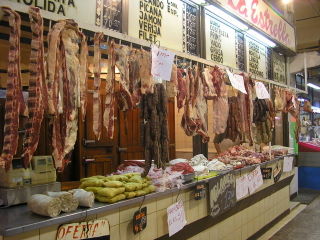
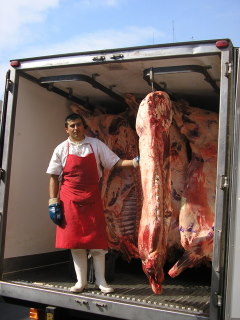
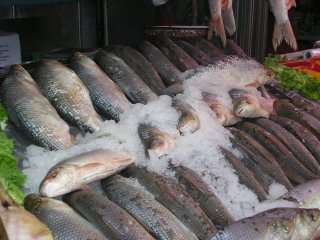
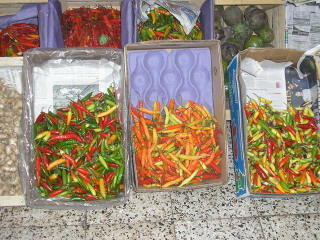
Walking around the city at night we experienced a reality of living near a land of sugar cane. A light “rain” of black ash fell gently from the sky picked up by the wind from the burning fields. The breeze would swirl the ash like snow flurries.
You can view a map of Tucuman province at:
maps of Argentine provinces
|
